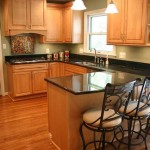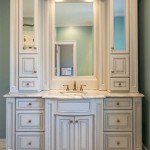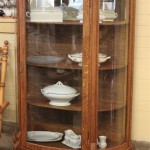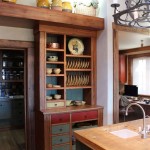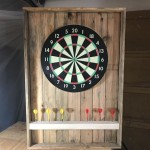Transform Your Kitchen With New Cabinets And Countertops: DIY Ideas
The kitchen, often considered the heart of the home, is a space that deserves attention and care. Its functionality and aesthetic appeal significantly influence the overall living experience. Redesigning a kitchen, especially with new cabinets and countertops, can dramatically transform its look and feel. While professional installation is always an option, undertaking a DIY project can be a rewarding and cost-effective way to personalize the space and achieve desired results. This article explores several DIY ideas for replacing kitchen cabinets and countertops, emphasizing planning, preparation, and execution.
Planning and Preparation: The Foundation for Success
Before embarking on any DIY kitchen renovation, meticulous planning and preparation are crucial. This initial phase lays the groundwork for a successful project, minimizing potential setbacks and ensuring a smoother workflow. The planning stage involves several key steps, including defining the scope of the project, establishing a budget, and creating a detailed design.
The first step is to determine the extent of the renovation. Will the project involve a complete overhaul of the kitchen, including replacing all cabinets and countertops, or will it focus on specific areas? Identifying the project's scope helps in setting realistic expectations and allocating resources effectively. This also includes taking precise measurements of the existing kitchen space. Accurate measurements are essential for ordering the correct size of cabinets and countertops.
Budgeting is another critical aspect of the planning phase. Determine a realistic budget that accounts for the cost of materials, tools, and any potential unforeseen expenses. Research different cabinet and countertop options, comparing prices and quality to find the best value for the budget. Consider setting aside a contingency fund to cover unexpected costs that may arise during the project. A detailed budget helps in staying on track financially and avoiding overspending.
Design plays a vital role in the overall outcome of the kitchen renovation. Consider the desired aesthetic style, functionality, and layout of the kitchen. Explore different design options, taking into account the existing space and personal preferences. Tools like online kitchen design software or even hand-drawn sketches can be incredibly helpful in visualizing the final result. The design should specify the type of cabinets (stock, semi-custom, or custom), countertop material (laminate, granite, quartz, etc.), hardware (knobs, pulls, hinges), and other essential elements.
Once the design is finalized, create a detailed checklist of all the necessary materials and tools. This list should include cabinets, countertops, hardware, adhesives, sealants, measuring tools, power tools (saw, drill, sander), safety equipment (gloves, goggles, mask), and any other items required for the installation process. Gathering all the necessary materials and tools beforehand ensures a smooth and efficient workflow.
Finally, preparation involves clearing the kitchen of all appliances, furniture, and belongings. Protect the surrounding areas with drop cloths or plastic sheeting to prevent damage from dust and debris. Disconnect any plumbing or electrical connections to the existing cabinets and countertops, taking necessary safety precautions. With careful planning and thorough preparation, the DIY kitchen renovation project is set up for success.
Cabinet Installation: Step-by-Step Guide
Installing new kitchen cabinets is a significant undertaking that requires precision and attention to detail. The process involves several steps, including removing the old cabinets, preparing the walls, installing the base cabinets, and installing the wall cabinets. Each step is critical to ensuring a secure and functional kitchen.
The first step is to remove the existing cabinets. Start by disconnecting any plumbing or electrical connections to the cabinets. Then, carefully remove the doors, drawers, and shelves. Use a drill or screwdriver to remove the screws that secure the cabinets to the wall. Gently pry the cabinets away from the wall, taking care not to damage the surrounding surfaces. Dispose of the old cabinets properly.
After removing the old cabinets, prepare the walls for the new installation. Inspect the walls for any damage, such as cracks or holes. Repair any imperfections using patching compound and sand the surface smooth. Ensure that the walls are level and plumb, as this will affect the alignment of the new cabinets. Use a level to check for any unevenness and shim the walls as needed. Clean the walls thoroughly to remove any dust or debris.
The next step is to install the base cabinets. Start by locating the highest point on the floor using a level and a straight edge. This will serve as the reference point for installing the base cabinets. Mark a level line on the wall at the height of the base cabinets. Position the base cabinets along the wall, ensuring they are aligned with the marked line. Use shims to level the cabinets if necessary. Secure the base cabinets to the wall using screws, making sure they are firmly attached to the studs. Connect the base cabinets together using screws or clamps.
Once the base cabinets are installed, proceed with installing the wall cabinets. Locate the studs in the wall using a stud finder. Mark the location of the studs on the wall. Install a temporary support board below the location of the wall cabinets to help hold them in place during installation. Lift the wall cabinets into position, aligning them with the studs and the base cabinets. Use screws to secure the wall cabinets to the studs. Connect the wall cabinets together using screws or clamps. Remove the temporary support board after the cabinets are securely installed.
After installing all the cabinets, check for any gaps or misalignments. Use shims to adjust the cabinets as needed. Install the doors, drawers, and shelves. Attach the hardware, such as knobs and pulls. Ensure that all the doors and drawers open and close smoothly. With careful attention to detail, the cabinet installation will result in a functional and aesthetically pleasing kitchen.
Countertop Installation: A Seamless Finishing Touch
The installation of new countertops is the final step in transforming the kitchen. The process involves several steps, including measuring and cutting the countertop, installing the countertop, and sealing the countertop. Each step is critical to ensuring a durable and attractive kitchen surface.
The first step is to measure and cut the countertop to the desired size and shape. Use a measuring tape to accurately measure the dimensions of the base cabinets. Transfer the measurements to the countertop material. Use a saw to cut the countertop to the desired size and shape, taking care to follow the marked lines. For materials like granite or quartz, professional cutting is highly recommended due to the specialized equipment and skills required.
After cutting the countertop, prepare the surface for installation. Clean the base cabinets thoroughly to remove any dust or debris. Apply a bead of construction adhesive to the top of the base cabinets. Carefully lift the countertop into position, aligning it with the base cabinets. Press the countertop firmly onto the base cabinets, ensuring it is securely attached to the adhesive.
Once the countertop is in place, secure it to the base cabinets using screws or brackets. Drill pilot holes through the countertop into the base cabinets. Insert screws into the pilot holes and tighten them until the countertop is firmly secured. Install brackets along the edges of the countertop for added support.
The final step is to seal the countertop to protect it from stains and moisture. Apply a sealant to the surface of the countertop, following the manufacturer's instructions. Ensure that the sealant is evenly distributed and covers all areas of the countertop. Allow the sealant to dry completely before using the countertop. Reapply the sealant periodically to maintain its protective properties.
For sink and cooktop cutouts, it's imperative to follow the manufacturer's instructions provided with those fixtures. These often require precise measurements and specific installation techniques to ensure a watertight seal and proper functionality.
With careful attention to detail, the countertop installation will provide a seamless and attractive finishing touch to the transformed kitchen. The DIY kitchen renovation project will result in a functional and aesthetically pleasing space that enhances the overall living experience.
In conclusion, undertaking a DIY kitchen renovation with new cabinets and countertops can be a rewarding and cost-effective way to transform the heart of the home. Careful planning, meticulous preparation, and attention to detail are crucial for a successful project. By following the steps outlined in this article, homeowners can achieve a functional and aesthetically pleasing kitchen that enhances their overall living experience.

20 Ideas For Kitchen Counter Updates Extra Space Storage

21 Diy Affordable Ways To Redo Kitchen Cabinets Extra Space Storage

21 Diy Affordable Ways To Redo Kitchen Cabinets Extra Space Storage

25 Easy Ways To Update Kitchen Cabinets

Cool Calming Kitchen Makeover The Perfect Finish Blog By Kilz

Before And After Diy Kitchen Renovation Lemon Thistle

Kitchen Ideas Remodeling And Renovating In 2024 Model Remodel

Before And After My Budget Kitchen Remodel Toolbox Divas

10 Simple Ideas To Update Your Kitchen Cabinets Jenna Sue Design
Tips For Partial Kitchen Makeovers When You Can T Remodel It All Designed
Related Posts

